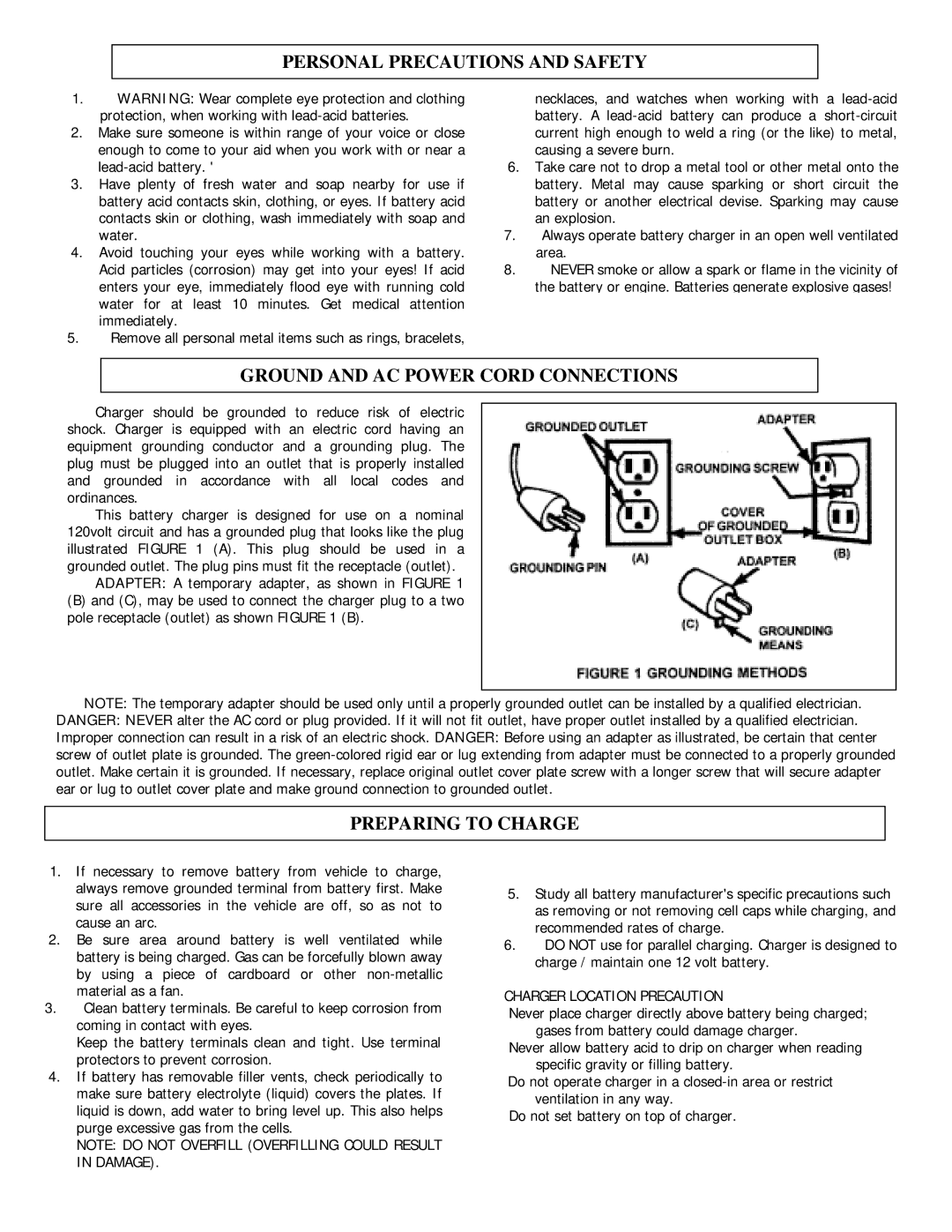SE-112S specifications
The Schumacher SE-112S is a robust and efficient battery charger designed to meet the needs of automotive enthusiasts and professionals alike. Known for its reliability and advanced technology, the SE-112S stands out in the crowded market of battery maintenance tools.One of the most pivotal features of the Schumacher SE-112S is its versatility. It is designed to charge a variety of batteries, including standard lead-acid, deep-cycle, and AGM (Absorbent Glass Mat) batteries. This flexibility makes it an ideal choice for both personal and professional use, ensuring compatibility with most vehicle types, from cars and trucks to motorcycles and lawn equipment.
The SE-112S employs a microprocessor-controlled charging system that optimizes the charging process. This technology allows for precise monitoring and adjustment of the charging parameters, resulting in a faster and more efficient charge. The charger automatically adjusts the current output based on the battery’s needs, which helps to prolong battery life and prevent overcharging.
Safety is a paramount consideration in the design of the Schumacher SE-112S. It includes several integrated safety features such as reverse polarity protection, safeguarding against incorrect connections, and short circuit protection, which prevents any potential damage to the battery or charger itself. Additionally, the fully automatic operation adds an extra layer of convenience, allowing users to set the charger and walk away without constant supervision.
The SE-112S is equipped with LED indicators that provide real-time status updates on the charging process. These indicators make it easy to assess the charger’s performance at a glance, keeping users informed of the battery’s condition throughout the charging cycle.
Another notable characteristic of the Schumacher SE-112S is its compact and durable design. This charger is built for portability, making it easy to store and transport, whether in a workshop or on the go. Its rugged construction ensures that it can withstand the rigors of frequent use, cementing its status as a reliable companion for anyone who requires dependable battery maintenance.
In conclusion, the Schumacher SE-112S combines versatility, advanced technology, and safety features to deliver an exceptional charging experience. Whether you are a casual user or a professional, this charger offers the functionality and performance required to maintain vehicle batteries effectively.

